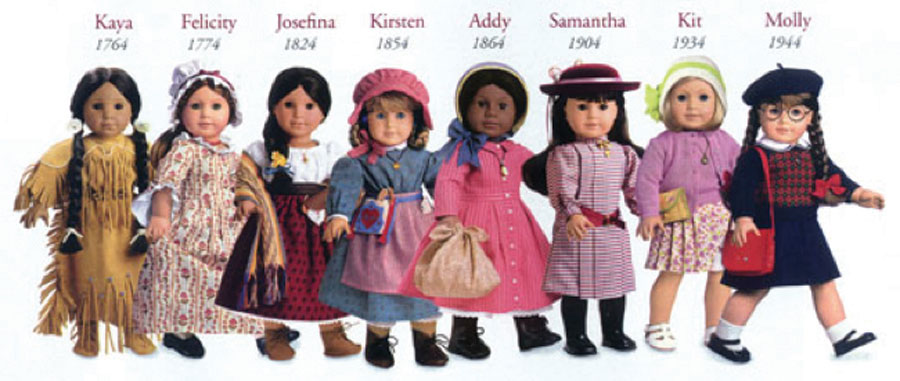When my sister and I were little, and we weren’t lapping up the kind of Disney Princess merchandise that Emily described, we loved the worlds created by American Girl (I provide the link here but it may be worth noting that I’m talking about the American Girl of about 2005, which was a different place than what’s there now). Each (expensive) doll, from a specific historical period, had six books that followed a set pattern—an introduction, a school-focused one, a Christmas one, a birthday one. But this wasn’t the extent of the materials in the franchise.
In Convergence Culture, Henry Jenkins says that “more and more, storytelling has become the art of world building, as artists create compelling environments that cannot be fully explored or exhausted within a single work or even a single medium” (114) and adds that such a story “might be introduced in a film, expanded through television, novels, and comics; its world might be explored through game play or experienced as an amusement park attraction” (96). With American Girl, each series and its materials introduces a historical world and the parallel life of a fictional family. Each story was introduced through the six books and then expanded outwards. There were short stories (smaller format hardback books) that told extra stories and sometimes introduced new characters who appeared in chronologically main books. Without it, the books still made sense, but—as I remember—made more sense when you had read the smaller book. This reminds me of what Jenkins says of the Matrix films, where The Kid is introduced and mail is delivered in games between films.

Each series had a few of these short stories, and most had a few mysteries—these were geared towards older girls and cast the characters as closer to thirteen than to nine or ten. There were many other print materials, including the Welcome to [Character Name]’’s World books related the events of the fictional book to real historical facts and had photos of real clothes and homes from the era, which set the world of the dolls more concretely in the real world and allowed for more passages musing on what the characters might have done if they had been real—a greater immersion in the world—Jenkins, quoting Bilson, says that people “want to go deeper into stuff they love” (106) and American Girl allowed for that—there were cookbooks to make food like that in the books, craft books to make things the characters might have done, the (very expensive) dolls and outfits, the human-sized versions of some outfits, the paper dolls, the movies, and the American Girl stores with hair salons and cafes. The website had games – I remember one (no longer available) that took you to different rooms of a house to play different games in each space.
None of these spin-off materials generated anything particularly groundbreaking—Jenkins warns of the licensing today producing redundant, duplicate, or sloppy (105) work, and none of these works were as independent as the Matrix games and additional materials. They had the same characters, relied on the events of the main series, and illustrated the same outfits every time. But there was some co-creation—different authors wrote about different characters and that author did not write the movies or cookbook or design the outfits. American Girl was (is) in some ways a transmedia franchise, using games, different forms of books, toys, and films to reach its audience.
